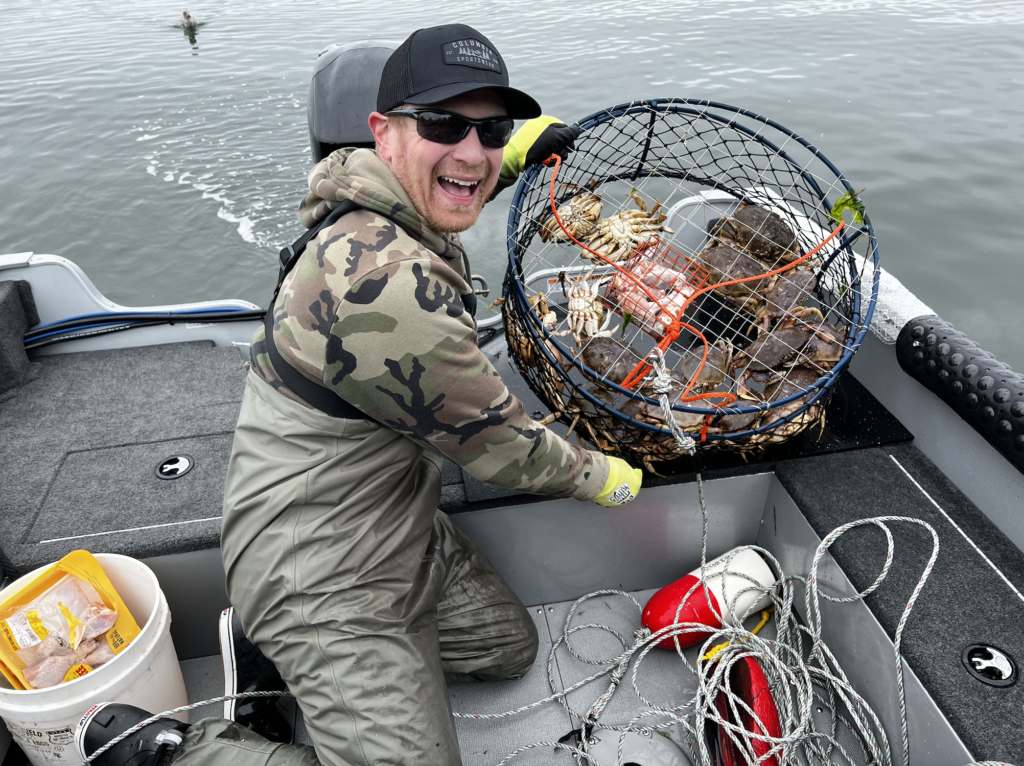My childhood summer memories revolved around baseball, sports camps, and crabbing with my grandpa on his old boat. Although the summer months of Dungeness crabbing can be slower than the fall or winter, the bays along the Oregon Coast have plenty of harvestable and big Dungeness crabs.
I love crabbing in the summertime at the coast. But summer is the slowest of the crabbing seasons on the West Coast, and you have to go a little above and beyond to find and catch those keeper male crabs. So before you head out for your next summer crabbing adventure, check out my top 5 summer crabbing tips to help you be more successful the next time on the water:
Tip #5 – Don’t Be Afraid of Negative Tides
In the summer, the coast will have negative tides, which can be tricky to navigate. Just ask my grandfather who ran a ground in Tillamook Bay 3 times. But just because the low tide starts as a negative doesn’t mean you won’t be able to get out and go crabbing. In fact, I love crabbing a small negative tide, taking my time to get to the crabbing grounds.
Tip #4 – Go Early, Leave Early
The early crabber gets the keeper crabs! After years of crabbing, I find in the summer that crabbing as early as possible can produce the best sized summer crabs. Plus, you can avoid the summer and weekend crowds to have more space to get to your gear.
Tip #3 – Experiment with Different Baits
Summer crabbing is much slower than fall crabbing, but that allows for experimenting with different baits. I have used everything from mink, to pork shoulder, to duck legs just to see if the crabs will go after some meaty bait they don’t encounter often. So just grab some super strange bait and see how the crabs react!
Tip #2 – Be Mindful of Crabbing Locations
Fall crabbing can be good in so many different areas of a bay. But in the summer, I always start with my go to spots where I have had the most success in the recent past. I will still put one trap in a new location, but I stick to the best spots first to get a keeper on the board early!
Tip #1 – Crab Deep Water
Negative tides and lower water levels will push the crabs into the mud, sand and locations out of the current to stay safe. Then when the water pours into the bay, the crabs will find those deeper pockets of water to feed and look for bait. Deeper waters have produced some quick limits, and some big summer crabs. Take some time to find those deep pockets and locations, then drop the gear and get ready to pull up some full crab pots.
